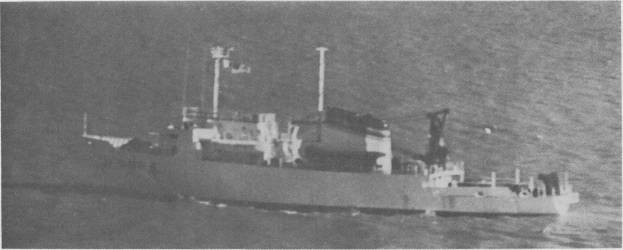James M. Gilliss II (T-AGOR-4)

(T-AGOR-4: dp. 1,200 (It.); l. 209'; b. 40'; dr. 16'; s. 13 k.; cpl. 26; cl. Robert D. Conrad)
James Melville Gilliss, born 6 September 1811 in Georgetown, D.C., entered the Navy as Midshipman at the age of 15. From the beginning of his service, he was active in scientific work and in improving the quality of navigation in the Navy. He was placed in charge of the Depot of Charts and Instruments at Washington, D.C., in 1837, and in the 1840's was instrumental in establishing the famed Naval Observatory there. In 1846 he published Astronomical Observations, a pioneer work in the field; and, from 1849 to 1852, he led an astronomical observation expedition to South America where he established an observatory at Santiago, Chile. Continuing his important astronomical and meteorological work, Captain Gilliss replaced Matthew Fontaine Maury as head of the Naval Observatory at the beginning of the Civil War. During the war he equipped Naval vessels with charts and instruments and directed important scientific work at the observatory. Captain Gilliss died 8 February 1865.
II
The second James M. Gilliss (T-AGOR-4) was laid down by Christy Corp., Sturgeon Bay, Wis., 31 May 1961; launched 19 May 1962; sponsored by Mrs. Hubert H. Humphrey, wife of the Senator from Minnesota; delivered to the Navy 5 October 1962; and turned over to MSTS 5 November 1962, Captain Torston Johnson in command.
Manned by a civilian crew and carrying 15 scientists from the Naval Oceanographic Office, James M. Gilliss was the first of a new class of oceanographic ships to be operated by MSTS. In addition to the latest in oceanographic and meteorological equipment, she also possesses unusual design features, including special antiroll tanks for stability and a retractable bow propulsion propeller. As a mobile, floating research laboratory, she is capable of carrying out experiments in sound transmission, underwater life, and ocean floor characteristics, thus enabling her to help continue the Navy's lead in the exploration and understanding of "inner space."
Departing Sturgeon Bay 8 November, she arrived New York 19 November for sea trials and shakedown. On 12 April 1963 she departed New York to take part in the massive search for sunken submarine Thresher (SSN-593). Operating out of Boston, she lent her "know-how" to this vital and difficult operation for 5 months before arriving Washington, D.C., 22 September. After returning to New London, Conn., for additional equipment tests, she departed 1 November for oceanographic research operations off Bermuda.
During the next 4 months she operated in the Atlantic from the Bahamas to the New England coast. In March 1964 she steamed to the Caribbean for surveying and scientific work out of San Juan, P.R. Arriving Key West, Fla., 28 March, she operated from the Strait of Florida to the Bahamas and Bermuda for more than a year. Departing Key West 23 May 1965, she arrived New York 27 May and prepared for deployment to waters off the British Isles. She sailed 14 June; arrived Belfast, Northern Ireland, 27 June; and began 3 months of research and survey operations from the British Isles and France to Newfoundland. Departing Belfast 15 September, she returned to New London 6 October and resumed research operations off the East Coast, which have continued into 1967. At present she operates in the Atlantic from New England to the Bahamas while supporting important surveys and scientific experiments of the Naval Oceanographic Office.


